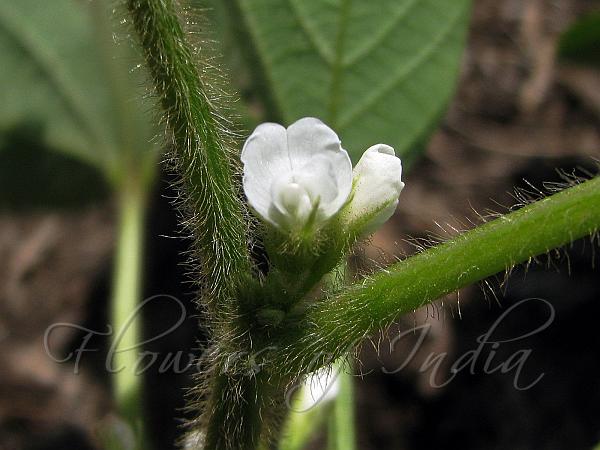|
| Soya Bean |
|

|

| File size | 393401 |
| Original date | 10/19/13 10:56 AM |
| Resolution | 1600 x 1200 |
| Flash | Flash did not fire, auto |
| Focal length | 6.0mm |
| Exposure time | 1/1600s |
| Aperture | 6.3 |
| Focus Distance | |
| Metering Mode | Multi-segment |
| Camera make | Canon |
| Camera model | Canon PowerShot S5 IS |
| Sensor type | OneChipColorArea |
|
|
|
|
Photo: |
Botanical name: Glycine max Family: Fabaceae (Pea family)
Synonyms: Dolichos sofa, Phaseolus max, Soja soja
Synonyms: Dolichos sofa, Phaseolus max, Soja soja
Soya bean is a legume native to East Asia, widely
grown for its edible bean which has numerous uses. Soy varies in growth
and habit. The height of the plant varies from less than 0.2 to 2.0 m.
The pods, stems, and leaves are covered with fine brown or gray hairs.
The leaves are trifoliolate, having three to four leaflets per leaf,
and the leaflets are 6-15 cm long and 2-7 cm broad. The leaves fall
before the seeds are mature. The inconspicuous, self-fertile flowers
are borne in the axil of the leaf and are white, pink or purple. The
fruit is a hairy pod that grows in clusters of three to five, each pod
is 3-8 cm long and usually contains two to four (rarely more) seeds
5-11 mm in diameter.
For human consumption, soybeans must be cooked with "wet" heat to
destroy the trypsin inhibitors (serine protease inhibitors). Raw
soybeans, including the immature green form, are toxic to all
monogastric animals. Soy protein products can be good substitutes for
animal products because, unlike some other beans, soy offers a
'complete' protein profile. Soya Bean is native to E Asia, widely
naturalized.
| Identification credit: Prashant Awale, Shrikant Ingalhalikar | Photographed in Maharashtra. |
• Is this flower misidentified? If yes,